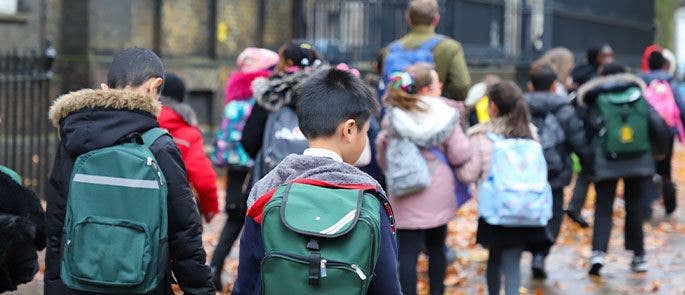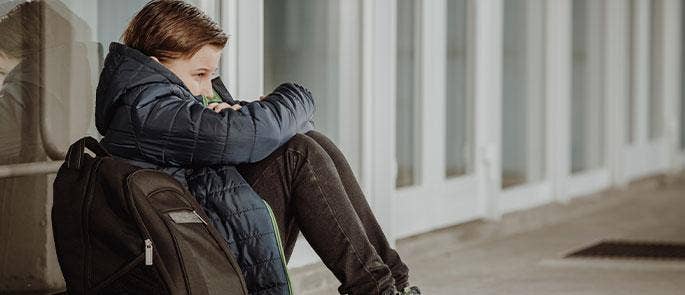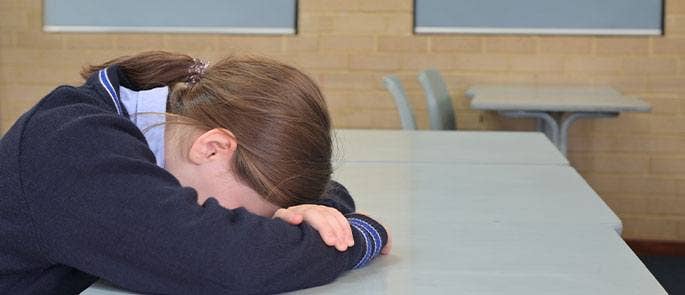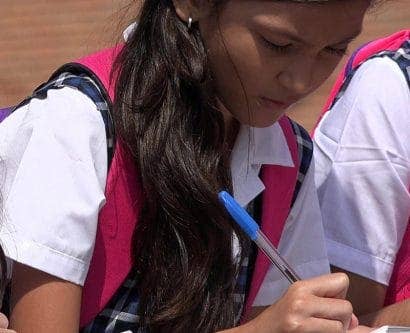Peer Pressure in Schools
The people we engage with on a daily basis are highly impactful and they can have a notable effect on our actions, our opinions and our behaviour. Peer pressure can impact anyone, at any stage of their life. It can range from a friend enthusiastically encouraging you to join their weekend plans, to buying the same brand of watch that your colleagues have to ‘fit in.’ Peer pressure isn’t always negative, nor is it always harmful. However, for children and young people peer pressure in schools can have incredibly dangerous consequences.
Peer pressure in schools can cause pupils to partake in unsafe or age inappropriate behaviour such as drinking, drug use or sexual activity. It can also be used to bully other students into conforming to the whims of a dominant social group. For those who work with children and young people, peer pressure can be hard to spot as it is not always overt. However, it’s vital that you are able to recognise the signs so that you can act accordingly and intervene before the situation escalates.
In this article we will outline what peer pressure is and some of the common causes of peer pressure. We will also explore some peer pressure scenarios and provide you with guidance on how you can handle the issue in your school.
What is Peer Pressure?
Peer pressure is the direct or indirect influence imposed by peers. It is the process by which members of a social group pressure others to do something for approval or to ‘fit in.’ Peer pressure can be completely harmless and in some cases even beneficial as it acts as a positive influence on others. For example, a group of friends may encourage one another to consistently revise for their exams so that they all achieve good grades. However, peer pressure can also be incredibly harmful and exacerbate bullying by coercing people into doing things they do not want to, out of fear of social alienation.
Irrespective of age we often turn to our peers for guidance, direction and a sense of belonging. This renders peer pressure an incredibly powerful force that is often used to determine whether someone ‘belongs’ to a given group or community based on their actions and adherence to the ‘rules.’ This can be particularly harmful for children and young people who do not have the cognitive ability or life experience to have the confidence to ‘go against the flow’ and say no. Peer pressure in schools poses a unique challenge for children and young people as it is often relentless. If someone is subjected to peer pressure at school it rarely stops there and the prevalence of social media in young people’s lives can make peer pressure feel inescapable.

Children can be pressured to take part in dangerous challenges, to send inappropriate content, to dress a certain way, act a certain way or to adopt certain views and behaviours. When this pressure follows them from the classroom, to the playground, to their homes via social media, it can quickly become all consuming and overwhelming. For many young people it then becomes much easier to say yes in an attempt to find some respite from the relentless pressure or to feel a sense of community that may have been lacking up to that point. Peer pressure can be a form of child-on-child abuse and it’s power lies in a child or young person’s desire to fit in. This need for belonging can make some students more vulnerable to peer pressure than others and less likely to question what they are being asked to do.
The consequences of negative peer pressure for children and young people can include:
- Low self-esteem
- Social alienation
- Stress
- Anxiety
- An unwillingness to go to school
- Isolation
- Depression
- Anger issues
Causes of Peer Pressure in Schools
There are a myriad of reasons why someone may succumb to peer pressure. These include, but are not limited to:
- A desire to fit in – conformity is a basic human instinct and many pupils struggle to find their own sense of identity. They may succumb to peer pressure in an attempt to conform to the social norms and expectations of the social group they wish to belong to.
- To stay safe – bullies may use peer pressure to dictate what behaviour is and isn’t ‘acceptable.’ This may lead some to adhere to peer pressure in order to stay safe and avoid any future, potentially physically aggressive, interactions with a bully.
- Low self-esteem – as mentioned, people of all ages look to their peers for guidance and a sense of belonging. Children and young people with low self-esteem may rely too heavily on their peers for this sense of validation and support, making them more susceptible to pressure from their peers.
- Social trends – social media, film and television are all incredibly influential in schools and society as a whole. If something becomes popular socially, peer pressure can encourage children and young people to engage with similar behaviour or trends. For example, if a brand becomes popular, having something from that brand may become a maker of social importance at school. Students may then feel pressure to have a similar item to enjoy a similar status of importance and feel like part of a group.

Children and young people are particularly vulnerable to peer pressure as their bodies and brains are still developing. This means that they are experiencing hormonal changes and developmental changes in the brain that can impact their impulse control and limit their ability to fully understand the consequences of their actions. This, coupled with pressure from peers, can make it hard for them to say no. Moreover, a natural curiosity to try and experience new things can make certain risky behaviour more appealing for children and young people, especially if their peers are already engaging in that behaviour.
As mentioned above, peer pressure can feel inescapable for children and young people. Social media has permeated into almost every aspect of our lives and children are not exempt from this. Students at schools without a clear mobile phone policy are likely to access and utilise social media throughout the day. If this social media is being used to cyberbully a student by peer pressuring them into doing something, the relentlessness of the pressure can make it feel impossible to say no. Furthermore, when children and young people have access to their phones, it’s not just pressure from their peers that they are dealing with. Platforms such as TikTok and Instagram are algorithmically designed to be addictive and show content based on previous content that has been engaged with. If a student has been pressured by their peers at school to engage in a certain trend, they are also highly likely to see that trend on their phones at the same time, making the pressure even harder to ignore when seemingly everyone is doing the same thing.
Want to Learn More?
Our CPD Courses for Teaching and Education can boost your knowledge and provide you with the understanding to assist your students. Courses such as our Challenging Behaviour and Child Mental Health courses can provide you with the tools to spot signs of peer pressure and support students who may be struggling.
Peer Pressure Scenarios
Below you will find three examples of peer pressure scenarios that you may encounter at school. These scenarios have been created to help you understand the different ways that peer pressure can manifest and to highlight some of the warning signs that a child or young person is being subjected to peer pressure.
Scenarios can be useful hypothetical examples of how different issues may present themselves. You can find examples of safeguarding scenarios in education, here.
Scenario A 
Maggie, aged 11
Maggie is an intelligent and academically gifted student who particularly excels in maths. Maggie has recently become friends with a new group of students who are not as invested in their education, rarely try as hard and at times actively disrupt class. Maggie is encouraged to join an extracurricular club to further develop her maths skills and prepare for an upcoming voluntary maths challenge that she signed up for. After inviting Maggie to join the club, she tells you that she needs to think about it for a bit and will give you her answer in a few days. You overhear Maggie talking to her new friends about joining the group and they clearly do not share her enthusiasm. When you mention the club to Maggie again, she tells you that she is no longer interested in joining or in participating in the maths challenge. Over the next few weeks you notice a significant change in Maggie’s behaviour and attitude towards her studies, as her friendship with her new social circle grows.
Scenario B 
Graham, aged 17
Graham is in his penultimate year of school. He has a lot of friends in the year above who have already turned 18 and will be heading to university soon. To make the most of the time that he has with them before they go their separate ways, he has been spending his weekends and school holidays hanging out with them. Many of Graham’s friends drink and smoke and as they are already 18, they are able to legally purchase these items themselves. Graham neither drinks nor smokes and isn’t interested in trying either. However, the more time he spends with his friends the more he is made to feel like the odd one out for not doing so. His friends imply that it will be hard to invite him to visit them at university if he doesn’t drink or smoke, because he won’t be able to partake in the socialising activities that they will be doing. They begin sending Graham videos of freshers week activities and different clubs in the cities they will each be travelling to, in an effort to show him how ‘normal’ drinking and smoking is. Graham, who is already worried about maintaining his friendships once his friends move away, decides to take up drinking so that his friends will continue to want to see him.
Scenario C 
Fatima, aged 14
Fatima is a skilled sports person who exercises regularly and is on the school swimming team. As a result of this, Fatima has a stronger build than many of her peers. When a popular new film comes out, you notice that many students of a similar age have begun to idolise the main female character; so much so that they have started to style their hair in a similar way to hers. You notice that one group of girls have taken this idolisation a step further and are dieting so as to adopt the same physique as this character. These girls begin making comments about Fatima’s body and how her sporty build is ‘unattractive.’ As some of the girls are also on the swimming team with Fatima, they begin offering her unsolicited advice on how she can change her physical appearance to be more ‘attractive.’ They begin sending her links to different websites and articles and making comments throughout practice on how she should adapt her moves to avoid ‘becoming bulky.’ Throughout this time Fatima continues participating in sports, however you notice that the type of sport changes and that her eating habits have also changed. Fatima now focuses more on cardio based exercises and avoids any sport that requires extensive upper body strength, such as swimming or rounders.
There is an undeniable overlap between peer pressure and bullying and oftentimes peer pressure is used as a means to bully people. However, the insidious nature of peer pressure lies in the fact that it often comes from friends, making it harder to spot as a form of bullying. Peer pressure often occurs face-to-face and online with the pressure building up over time. If a student is pressured to do something whilst at school, it’s highly likely they will continue to be pressured at home via social media, links they are sent or messages they receive.
In the scenarios above, each student was subjected to pressure from people they deemed peers. For Maggie, the pressure sought to get her to conform and adopt a similar attitude to her studies as her new friends. For Graham, the security of his friendship was brought into question for not partaking in the same activities as his friends. For Fatima, a socially popular trend resulted in her being pressured to change her physical appearance. Whilst there are elements in each scenario that are overt examples of peer pressure, it’s important to remember that a lot of peer pressure can occur behind closed doors with no sign that it has happened until the pressure has worked.

Peer pressure can often consist of a series of seemingly innocuous behaviours that wear down a person’s hesitation over time. In so doing, the conforming behaviour is normalised and the victims’ reasoning for refusal undermined. In the scenarios above, each student adopted uncharacteristic habits in order to fit in, however there would have been signs that this was happening before the new habit was adopted. For example, with Fatima, changes in her eating habits and the sports in which she was willing to participate, are a clear indicator that some influence is being imposed on her choices. However, these signs are not always obvious nor do they occur where you can see them. For example, Graham socialising with his friends at the weekend is something that an educator is unlikely to know about unless concerns were raised about his behaviour in the week as a result. In this instance, it can therefore be much harder to spot signs of peer pressure as they do not pertain to the school environment or a student’s studies.
How to Handle Peer Pressure
As mentioned above, peer pressure is something that everyone experiences at various stages throughout their life. Whilst it’s not possible to avoid peer pressure entirely, it is possible to provide children and young people with helpful guidance and support so that they can spot signs of peer pressure and ignore it where possible.
Below you will find some useful tips on what you can do to handle peer pressure in your school and support students who have been impacted by it.
- Celebrate individuality – Peer pressure is often rooted in a desire to ‘fit it.’ By encouraging students to celebrate their individuality and the things that make them unique, you can empower them to be happy with their differences. It’s a natural human instinct to want to belong and seeking out a sense of belonging is not always negative. However, celebrating a student’s individuality encourages them to not sacrifice the parts of themselves that make them special or unique in order to do so.
- Encourage critical thinking – Encourage students to question what they are being asked to do by their peers. It can be hard to go against the grain when a friend is asking you to do something, however by providing a student with the skills and confidence to ask important questions, you are enabling them to make better informed decisions, or at the very least, consider the consequences of their actions.
- Foster community – This may seem at odds with the first tip, however a lack of community can cause students to seek it out in the wrong places. Encourage students to seek out like minded individuals and people who share their same interests and passions so that they develop more meaningful relationships that are based on shared values and mutual respect, not popularity.
- Create a plan – It’s impossible to prepare for every instance of peer pressure. However, you can provide students with a plan of what they should do if they think they are being subjected to peer pressure. Let them know that they can make an excuse if they don’t feel comfortable saying no and that they can’t, nor do they have to, please everyone and that’s okay. Encourage them to suggest alternatives, make excuses or talk to teachers if dangerous or illegal activities are being suggested.
- Provide a safe, communicative environment – Students who are seeking out a sense of belonging and community can often find it difficult to express themselves or talk about their feelings. This can make them particularly susceptible to peer pressure. Fostering a safe and communicative environment in which students are encouraged to talk to members of staff about their feelings and any problems they may be experiencing, enables you to spot signs of peer pressure and encourages students to make their own choices.
As mentioned, peer pressure and bullying go hand in hand and peer pressure can be used to force a child or young person to take part in dangerous or illegal activity. If you have any concerns that this is happening, you must speak to your designated safeguarding lead as soon as possible. The suggestions above can help to reduce the overall impact of peer pressure and provide students with the tools to challenge it. However, if you think a student has been pressured into doing something unsafe, you must take immediate action and raise your concerns with the necessary party so that support can be offered to those affected.
Peer pressure can impact anyone at any stage of their life, however children and young people are particularly susceptible to it. A desire to fit in, a desire to try new things and low self-esteem can all contribute to someone’s susceptibility to peer pressure. Celebrating individuality, fostering community and encouraging open communication are effective steps that you can take to counteract the negative effects of peer pressure in your school.
Further Resources:
- Safeguarding Scenarios and Answers for Education
- What you Need to Know About Child-on-Child Abuse
- Vaping in Schools: A Growing Concern and How to Address It
- CPD Courses for Teaching and Education











